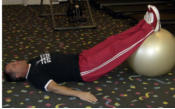Everything you need to look and feel your very best!
24-Hour Access, 1-on-1 Personal Training,
Home Fitness Equipment & Supplement Sales.
Jason’s Fitness 3724 Cottage Hill Rd. Mobile, Alabama (251) 661-4615
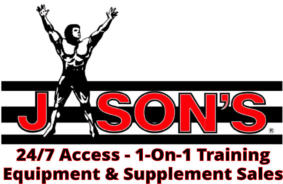
One-On-One with Jason S. Greene
Exercise Ball Glute Bridge
Sometimes
something
good
comes
out
of
something
bad.
In
2011
I
had
two
hip
replacement
surgeries.
To
be
specific,
I
had
the
Birmingham
Hip
Resurfacing
procedure
done
on
both
hips
by
Dr.
Dan
Matthews.
Not
a
good
thing
for
a
guy
who
makes
his
living
showing
people
how
to
exercise,
and
I
won’t
even
go
into
the
crushing my ego took, but it did make me take a fresh look at some old exercises.
First
a
little
history
lesson,
the
big
round
balls
you
see
in
many
health
clubs
today
were
invented
in
Italy
in
1963.
They
gained
the
attention
of
a
Swiss
physical
therapist,
who
began
using
them
in
orthopedic
rehabilitation.
In
the
1980’s
American
physical
therapists
visiting
European
clinics
learned
of
its
use
and
brought
them
back
to
North
America;
which
is
why
they
were
originally
referred
to
as
“Swiss
Balls”.
They
then
moved
from
there
into
the
fitness
and
athletic
training
scene
in
the
early
1990’s.
They
have
become
increasingly
popular
due
to
their
ability
to
safely
train
the
core
or
mid-section
of
the
body.
Like
many
fitness
experts
I
used
them
constantly
at
first,
then
got
bored
with
them.
Then
about
10-years
ago
the
term
core
started getting thrown around and they got popular all over again.
This
exercise
works
your
Abs,
Back,
Butt/Hips.
Now
I
have
your
attention!
The
best
part,
all
you
need
is
one
“Swiss Ball/Exercise Ball” and a floor to lie on.
A:
Lie
on
your
back
on
a
mat
or
carpet,
placing
the
backs
of
your
lower
legs
and
heels
on
the
top
of
an
exercise
ball.
Place
your
feet
a
few
inches
apart
on
the
ball
with
your
ankles
slightly
flexed.
Keep
your
arms
out
to
your
sides
with
the
palms
facing
down
on
the
floor
to
help stabilize your body.
B:
Exhale
while
keeping
the
abdominals
tight
and
lift
your
hips
up
off
the
floor.
The
backs
of
your
lower
legs
and
heels
are
pressing
into
the
ball
to
assist
the
movement
and
provide
stability.
Press
up
until
your
upper
body
and
legs
form
a
straight
line
with
each
other.
Avoid
pushing
your
hips
so
high
that
your
low
back
begins
to
arch.
Contracting
your
abdominals
helps
prevent
excessive
arching
in
your
low
back.
Inhale
and
slowly
lower
yourself
back
towards your starting position.
To
increase
the
balance
challenge,
move
your
feet
closer
together
on
the
ball
and
or
move
your
hands
closer
to
your body.
To
increase
the
intensity
of
the
exercise,
raise
one
leg
off
the
ball
toward
the
ceiling.
Do
not
arch
your
lower
back
as
you
press
your
hips
upward,
which
normally
occurs
when
your
hips
are
pressed
up
too
far.
Tighten
your
abdominal/core
muscles
prior
to
lifting,
and
keeping
them tight throughout the lift, in order to help prevent arching.
Disclaimer:
One
on
One
with
Jason
aims
to
provide
general
fitness
and
exercise
information.
Advice
offered
may
not
be
applicable
to
all
individuals
and
does
not
constitute
medical
advice.
People
have
different
needs,
abilities
and
levels
of
health.
It
is
recommended
that
all
readers
consult
a
medical
professional
before
beginning
any
form
of
exercise,
participate
in
any
physical
fitness
or
sports
training
program
or
undertake
any
form
of
health
plan,
nutrition
program
or
weight
loss
diet,
especially
if
you have been inactive most of your life, suffer from obesity or have any health problems.
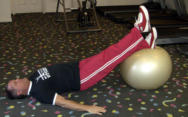
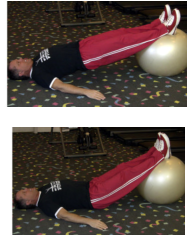


Everything you need to look and feel your very best!
24-Hour Access, 1-on-1 Personal Training,
Home Fitness Equipment & Supplement Sales.
Jason’s Fitness 3724 Cottage Hill Rd. Mobile, Alabama (251) 661-4615
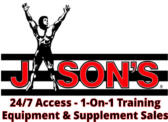
One-On-One with Jason S. Greene
Exercise Ball Glute Bridge
Sometimes
something
good
comes
out
of
something
bad.
In
2011
I
had
two
hip
replacement
surgeries.
To
be
specific,
I
had
the
Birmingham
Hip
Resurfacing
procedure
done
on
both
hips
by
Dr.
Dan
Matthews.
Not
a
good
thing
for
a
guy
who
makes
his
living
showing
people
how
to
exercise,
and
I
won’t
even
go
into
the
crushing
my
ego
took,
but
it
did
make
me
take a fresh look at some old exercises.
First
a
little
history
lesson,
the
big
round
balls
you
see
in
many
health
clubs
today
were
invented
in
Italy
in
1963.
They
gained
the
attention
of
a
Swiss
physical
therapist,
who
began
using
them
in
orthopedic
rehabilitation.
In
the
1980’s
American
physical
therapists
visiting
European
clinics
learned
of
its
use
and
brought
them
back
to
North
America;
which
is
why
they
were
originally
referred
to
as
“Swiss
Balls”.
They
then
moved
from
there
into
the
fitness
and
athletic
training
scene
in
the
early
1990’s.
They
have
become
increasingly
popular
due
to
their
ability
to
safely
train
the
core
or
mid-section
of
the
body.
Like
many
fitness
experts
I
used
them
constantly
at
first,
then
got
bored
with
them.
Then
about
10-years
ago
the
term
core
started
getting
thrown
around
and
they
got popular all over again.
This
exercise
works
your
Abs,
Back,
Butt/Hips.
Now
I
have
your
attention!
The
best
part,
all
you
need
is
one
“Swiss
Ball/Exercise
Ball”
and
a
floor
to
lie on.
A:
Lie
on
your
back
on
a
mat
or
carpet,
placing
the
backs
of
your
lower
legs
and
heels
on
the
top
of
an
exercise
ball.
Place
your
feet
a
few
inches
apart
on
the
ball
with
your
ankles
slightly
flexed.
Keep
your
arms
out
to
your
sides
with
the
palms
facing
down
on the floor to help stabilize your body.
B:
Exhale
while
keeping
the
abdominals
tight
and
lift
your
hips
up
off
the
floor.
The
backs
of
your
lower
legs
and
heels
are
pressing
into
the
ball
to
assist
the
movement
and
provide
stability.
Press
up
until
your
upper
body
and
legs
form
a
straight
line
with
each
other.
Avoid
pushing
your
hips
so
high
that
your
low
back
begins
to
arch.
Contracting
your
abdominals
helps
prevent
excessive
arching
in
your
low
back.
Inhale
and
slowly
lower
yourself back towards your starting position.
To
increase
the
balance
challenge,
move
your
feet
closer
together
on
the
ball and or move your hands closer to your body.
To
increase
the
intensity
of
the
exercise,
raise
one
leg
off
the
ball
toward
the
ceiling.
Do
not
arch
your
lower
back
as
you
press
your
hips
upward,
which
normally
occurs
when
your
hips
are
pressed
up
too
far.
Tighten
your
abdominal/core
muscles
prior
to
lifting,
and
keeping
them
tight
throughout
the
lift,
in
order to help prevent arching.
Disclaimer:
One
on
One
with
Jason
aims
to
provide
general
fitness
and
exercise
information.
Advice
offered
may
not
be
applicable
to
all
individuals
and
does
not
constitute
medical
advice.
People
have
different
needs,
abilities
and
levels
of
health.
It
is
recommended
that
all
readers
consult
a
medical
professional
before
beginning
any
form
of
exercise,
participate
in
any
physical
fitness
or
sports
training
program
or
undertake
any
form
of
health
plan,
nutrition
program
or
weight
loss
diet,
especially
if
you
have
been
inactive
most
of
your
life,
suffer
from
obesity
or
have any health problems.

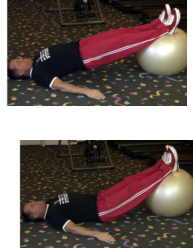


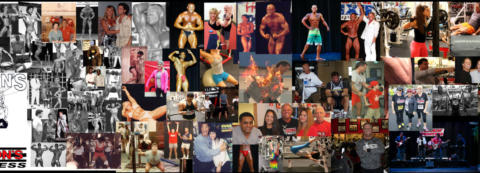
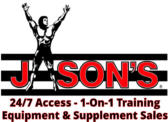
One-On-One with Jason S. Greene
Exercise Ball Glute Bridge
Sometimes
something
good
comes
out
of
something
bad.
In
2011
I
had
two
hip
replacement
surgeries.
To
be
specific,
I
had
the
Birmingham
Hip
Resurfacing
procedure
done
on
both
hips
by
Dr.
Dan
Matthews.
Not
a
good
thing
for
a
guy
who
makes
his
living
showing
people
how
to
exercise,
and
I
won’t
even
go
into
the
crushing
my
ego
took,
but
it
did
make
me
take
a fresh look at some old exercises.
First
a
little
history
lesson,
the
big
round
balls
you
see
in
many
health
clubs
today
were
invented
in
Italy
in
1963.
They
gained
the
attention
of
a
Swiss
physical
therapist,
who
began
using
them
in
orthopedic
rehabilitation.
In
the
1980’s
American
physical
therapists
visiting
European
clinics
learned
of
its
use
and
brought
them
back
to
North
America;
which
is
why
they
were
originally
referred
to
as
“Swiss
Balls”.
They
then
moved
from
there
into
the
fitness
and
athletic
training
scene
in
the
early
1990’s.
They
have
become
increasingly
popular
due
to
their
ability
to
safely
train
the
core
or
mid-section
of
the
body.
Like
many
fitness
experts
I
used
them
constantly
at
first,
then
got
bored
with
them.
Then
about
10-years
ago
the
term
core
started
getting
thrown
around
and
they
got
popular
all
over
again.
This
exercise
works
your
Abs,
Back,
Butt/Hips.
Now
I
have
your
attention!
The
best
part,
all
you
need
is
one
“Swiss
Ball/Exercise Ball” and a floor to lie on.
A:
Lie
on
your
back
on
a
mat
or
carpet,
placing
the
backs
of
your
lower
legs
and
heels
on
the
top
of
an
exercise
ball.
Place
your
feet
a
few
inches
apart
on
the
ball
with
your
ankles
slightly
flexed.
Keep
your
arms
out
to
your
sides
with
the
palms
facing down on the floor to help stabilize your body .
B:
Exhale
while
keeping
the
abdominals
tight
and
lift
your
hips
up
off
the
floor.
The
backs
of
your
lower
legs
and
heels
are
pressing
into
the
ball
to
assist
the
movement
and
provide
stability.
Press
up
until
your
upper
body
and
legs
form
a
straight
line
with
each
other.
Avoid
pushing
your
hips
so
high
that
your
low
back
begins
to
arch.
Contracting
your
abdominals
helps
prevent
excessive
arching
in
your
low
back.
Inhale
and
slowly
lower
yourself back towards your starting position.
To
increase
the
balance
challenge,
move
your
feet
closer
together
on
the
ball
and
or
move
your
hands
closer
to
your
body.
To
increase
the
intensity
of
the
exercise,
raise
one
leg
off
the
ball
toward
the
ceiling.
Do
not
arch
your
lower
back
as
you
press
your
hips
upward,
which
normally
occurs
when
your
hips
are
pressed
up
too
far.
Tighten
your
abdominal/core
muscles
prior
to
lifting,
and
keeping
them
tight
throughout
the
lift,
in
order to help prevent arching.
Disclaimer:
One
on
One
with
Jason
aims
to
provide
general
fitness
and
exercise
information.
Advice
offered
may
not
be
applicable
to
all
individuals
and
does
not
constitute
medical
advice.
People
have
different
needs,
abilities
and
levels
of
health.
It
is
recommended
that
all
readers
consult
a
medical
professional
before
beginning
any
form
of
exercise,
participate
in
any
physical
fitness
or
sports
training
program
or
undertake
any
form
of
health
plan,
nutrition
program
or
weight
loss
diet,
especially
if
you
have
been
inactive
most
of
your
life,
suffer
from
obesity
or
have any health problems.


